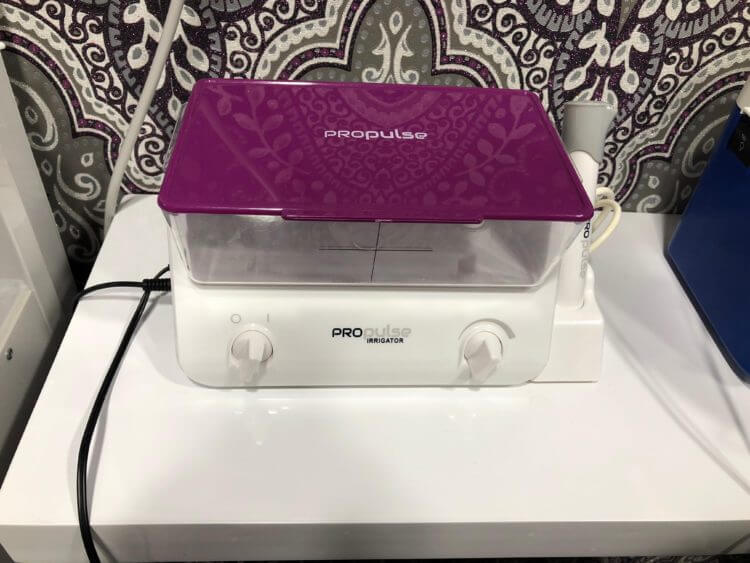
Many of you may have heard of the procedure Water Syringing, but the more modern term used now is Water Irrigation. Water Irrigation or syringing is a method of wax removal carried out by most Ear Care Specialists or clinicians usually using the Propulse water Irrigator. The Propulse Irrigator enables effective patient care, with adjustable water pressure providing safe water delivery.
Inside of the ear is very sensitive, if you have a build-up of ear wax this can cause damage to the canal and eardrum which can affect your hearing. The ear irrigation method is a safe way to minimize the risk of damage to the ear, however, ear syringing is not safe for everyone. Individuals who have severe Otitis Externa, also known as swimmers’ ear and those with a history of eardrum surgery, middle ear disease or radiation therapy to the ear. Your ear care specialist will discuss with you a safer alternative of ear wax removal such as Microsuction or manual removal.
You will be advised to use olive oil at least 3 days prior to the appointment to try and soften the ear wax, failure to do this may mean the ear care specialist may not be able to remove the wax effectively and you will be asked to come back for a 2nd or 3rd appointment.
Before any ear care professional performs water irrigation, they will ask you a series of questions based on your medical history to deem whether the procedure will be safe to carry out. Once they have all your information, they will then shine a light into your ears with an Otoscope which magnifies the image to ensure that your symptoms are the result of excess wax build-up and not something more serious.
Once you have been asked a series of questions, the specialist will you take you into the treatment room to begin the procedure. Using the controlled pressurised flow of water, they will begin to remove the build-up of ear wax. Under the gentle force of the water, the ear wax is softened and washed out of the ear. It’s important to know that cold water should not be used, instead be a warm, tepid temperature.
Water Irrigation is totally comfortable, and, in many cases, the ear wax blockage is removed in minutes, most people do not suffer pain during the procedure and often recommend it to their friends and family.
Like with most things you may experience some side effects from having the water irrigation method. These side effects are not typically serious, but they can be uncomfortable. Common side effects of ear irrigation can include the following:
The method of water syringing has come a long way, many GP surgeries unfortunately no longer offer this service, however, there are many Audiologists and Ear Care specialist up and down the country that are specialising in Water Irrigation and other methods of wax removal.
The benefits of water irrigation over the microsuction method is, it tends to remove the majority of the wax leaving a clear image of the eardrum. You wouldn’t necessarily get this outcome with the Microsuction method or Manual Removal alone. However, sometimes both Water Irrigation and Microsuction are used together to attempt to clear the ear.
You may experience some soreness after the procedure, this is extremely rare and can be due to the removal of large amounts of wax being removed. If you experience moderate to severe pain, this could be down to an undying infection, in this case, speak to your local pharmacist or make an appointment with your GP.
It is very important that you keep the ear dry for at least seven days after the procedure as you may be prone to infection, if you have a shower place some cotton wool into the ear and if you are a keen swimmer make sure to use earplugs.
If after having the procedure you find you are still struggling with your hearing, the ear care specialist will either advise on any medical issues detected and may provide a report for you to take to your GP or offer to book you in for a hearing test.